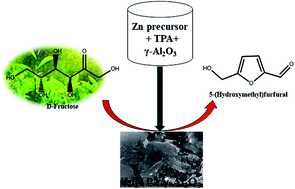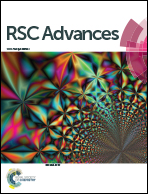A novel microwave-assisted hydrothermal route for the synthesis of ZnxTPA/γ-Al2O3 for conversion of carbohydrates into 5-hydroxymethylfurfural
Abstract
Energy-efficient and sustainable processes for the production of 5-hydroxymethylfurfural (HMF) from carbohydrates are in high demand. Bivalent ion-exchanged microwave-synthesized ZnxTPA/γ-Al2O3 was employed for the direct conversion of carbohydrates into HMF. The as-synthesized samples were structurally characterized by FTIR and Raman spectroscopy, UV-Vis diffused reflectance spectroscopy, and X-ray diffraction. Thermal characterization was performed by TG-DTA. The surface morphology was analysed by FE-SEM, and surface area analysis was performed. The surface acidities of the as-synthesized catalysts were elucidated by pyridine FTIR spectra and NH3-TPD. The catalytic performance was thoroughly studied as a function of Zn2+ doping, reaction temperature, catalysts loading, and effect of solvents. Microwave-synthesized Zn0.5TPA/γ-Al2O3 exhibited excellent catalytic fructose dehydration, with 88% HMF yield at 120 °C for 2 h. The surface Brønsted acidity was found to be crucial for optimum catalytic activity.



 Please wait while we load your content...
Please wait while we load your content...